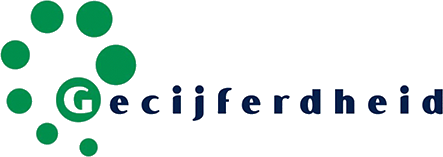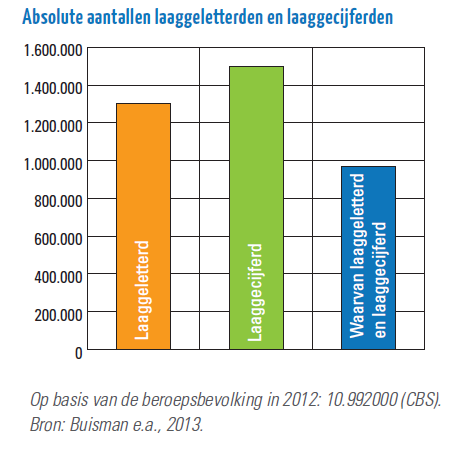Soon (mid-June 2019) the Parliament of The Netherlands will discuss a government policy letter on how to deal with low-literacy in the Netherlands in the coming years.
A lot of attention will be paid to the language problems of individuals. This is an important and relevant policy choice. It is estimated that 1.3 million Dutch citizens (more than 10% of the working population) are limited in their daily functioning by language problems.
However, it is highly underexposed in the aforementioned p[olicy letter that an even larger number of adults (1.5 million) in the Netherlands have problems with money, numbers, operations with numbers, and the understanding and interpretation of numerical information. This is called low-numeracy. Today, this is probably the most underestimated obstacle for many adults to be able to function optimally in our current high-tech society.
Which problems are related to low-numeracy?
There are roughly three major problems in low-numeracy: (1) finance, money and what is related to it, (2) health, food, medicines and especially all quantitative information about them, and (3) digital skills such as understanding tables, timetables, schedules, forms, menu structures, diagrams, advertisements, which people encounter in mail from institutions, on websites and in apps.
Debt is the most important issue in relation to finance and money (1). Support can include budgeting, learning to estimating, doing global mental calculations, being able to deal critically with offers in newspapers or on shopping websites, and not being cheated or exploited. But dealing with real and virtual money on a daily basis is also quite a challenge for many people.
As far as health (2) is concerned, the main problem is the misuse of medication, sometimes with far-reaching consequences. Support for this can include talking together about and looking at medicine packaging, leaflets, and instructions. But also looking at food labels and trying to understand them is a real numeracy problem. Looking at these together, talking about such labels and together trying to understand them can help a lot.
Digitisation (3) cannot be separated from numeracy either. It is precisely because of digitisation that more and more information is presented schematically, quantitatively and very compactly. Support can also be provided in smaller discussion groups: “Say in your own words what is meant here”, “Say in your own words what this graph wants to show you or convince you of.”.
This last theme clearly shows that working on language (literacy), numbers (numeracy) and digital skills does not have to be looked at in isolation and can often best be tackled in combination. In that case, it is important that supervisors, coaches, tutors, and course providers have a keen eye for the numeracy aspects of all sorts of situations.
What kind of approach can work well?
In order to tackle low-numeracy, the most important thing is to look at the person and his or her environment and how they function in that environment when it comes to money, numbers and quantitative information. In the research literature this is called “Numeracy as social practice”.
My experience is that of the numeracy problems of adults, 70% of the problems are psychological in nature and that perhaps only 30% of the problems are cognitive. In regular education, quite a few people are burdened with a large dose of math anxiety.
What is not going to help, therefore, is the provision of school-based deficiency tests, making pages of meaningless exercises, reliving primary school experiences, alienating numeracy from reality, and further fuelling arithmetical anxiety.
What can help is giving confidence to the learners, taking the learners’ own experiences and competencies as a starting point, teaching to see and interpret the ubiquitous quantitative aspects of the world around us, preferably together with others and in dialogue, and trying to understand in which worlds are hidden behind the numbers shown: what is the purpose of displaying them in numbers, what calculations are hidden behind conclusions or statements, etcetera.
However, much remains to be developed and tested in this area. It would be helpful if the budget for addressing low-literacy were to include a serious part for addressing low-numracy.
I think that a quarter of each euro in the budget sounds like a reasonable amount, don’t you think so? 😊

